

First dive in December 1984. Anders Wästfelt brings three diving friends to Hunnebådan in search of any remnants of the wreck of the original foundered East Indiaman Gotheborg. They are successful. Anders Lyckdal (left) and Anders Lindvall (right) coming up with the first finds. The wreck site of the lost East Indiaman Gotheborg had been found.
Photo: Anders Wästfelt, 1984
A few years earlier Anders and Berit Wästfelt had come back from Eilat in Israel, where they had successfully run a diving school. Well back in Sweden, he had founded Marinarkeologiska Sällskapet, Göteborgskretsen (MASG) and was looking for an interesting enough wreck site that could be used for teaching marine archaeological competence and diving skills.
The Western Swedish Archipelago offers many possible wreck sites from the Viking age and onwards.
In December 1984 as luck would have it he received a telephone call from the marine archaeological author Catharina Ingelman-Sundberg who was researching famous Swedish ship wrecks for a book she was putting together, and wanted to know if Anders knew anything about the East Indiaman Götheborg that obviously had foundered and sunk at Nya Elfsborg, basically just outside of the Gothenburg harbor.
Then, as fate would have it, the antiques dealer Björn Gremner at AntikWest AB, introduced me to "a diver who had been down to the ship you are so interested in," as Björn put it. This was around the time of Christmas in 1984. And yes, I was interested in meeting with him. His name was Anders Wästfelt, and he appeared with a box of shards and some wooden sticks. No doubt, these were porcelain shards and wood from the tea and porcelain chests of the lost East Indiaman Gotheborg. This, nobody had seen for a very long time.
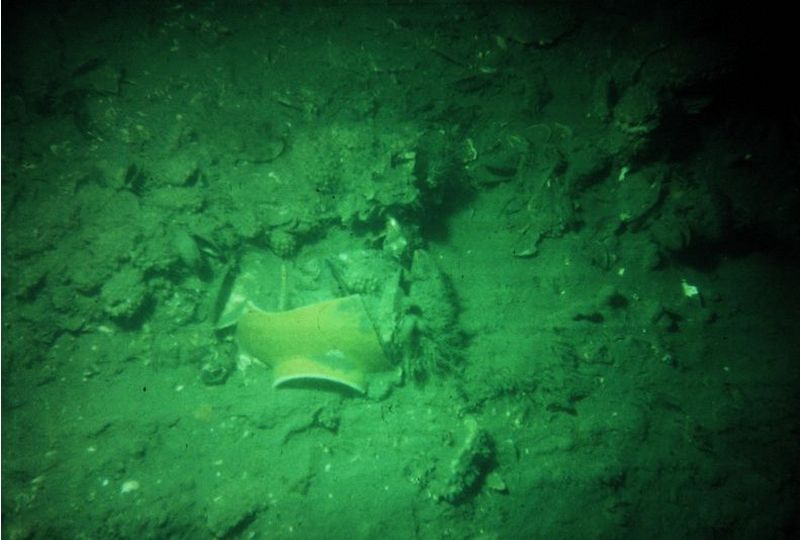
At the bottom Anders Wästfelt and his friends found an area large as several foot ball fields completely strewn over with porcelain shards and all kinds of wooden artefacts. It was no doubt that this was the wreck site, but there were no trace of the hull. What had happened?
Photo: Anders Wästfelt, 1984
From then on we met regularly. Anders and his divers cum maritime archaeologists team did a lot of ground breaking research as the excavation progressed. The public interest in the Swedish 18th century as a period of peace, trade, science and general progress was very much promoted. Even academia started to change focus from the Great Power period of the 17th century towards the scientific and culturally more interesting 18th century.

The underwater excavation which was followed via extensive publicity, thousands of lectures and a large number of international exhibitions went on during 1986-1992 and created the goodwill and public interest that would later fuel the ship building project.
In 1986 the Wästfelt excavation of the Gotheborg is commenced with its first diving season. Knowledge of the main proportions, the rig, the armaments, and other details of the ship is starting to be collected. Two first test trenches are dug. Large amounts of Chinese porcelain shards, remnants of broken tea crates, larger ship's construction parts are found.
The excavation was run as publicly and openly as possible. It caught the imagination and sympathy of wide swaths of people, from international to local governments, to the Swedish industry, and our tourist and business community, not to mention the public who all loved it.
The Friends of the East Indiaman Götheborg Organization is established in February to support the excavation project. Erik Wettergren becomes its first Chairman.
During the excavation the first complete and unbroken porcelain items are found. Different types of ammunition is also found together with personal belongings from the crew. Complete sides of tea crates are found.
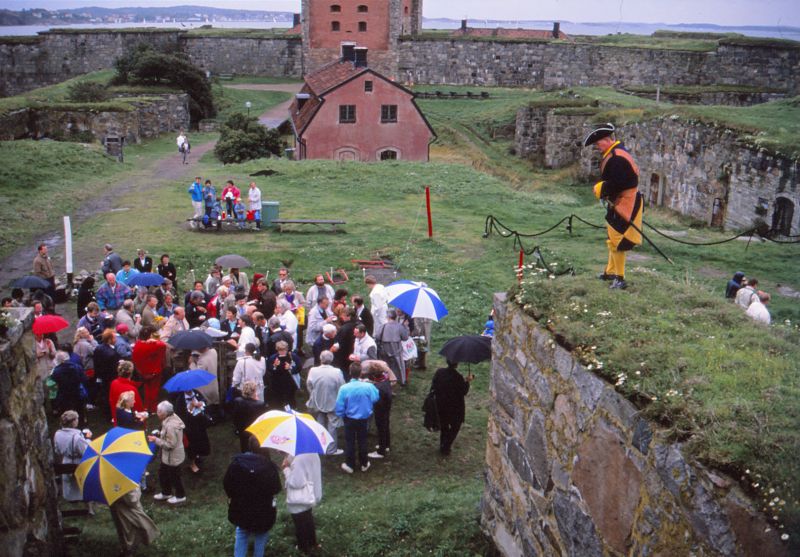
During the excavation period innumerable events and lectures was held to popularize the excavation of the East Indiaman and its results.
Details from the ships stern are identified.
The first complete bundle of intact porcelain plates are found which gives a first clue about what the the bundles listed in the cargo list could have looked like. Two large sections of the ships aft are lifted up.
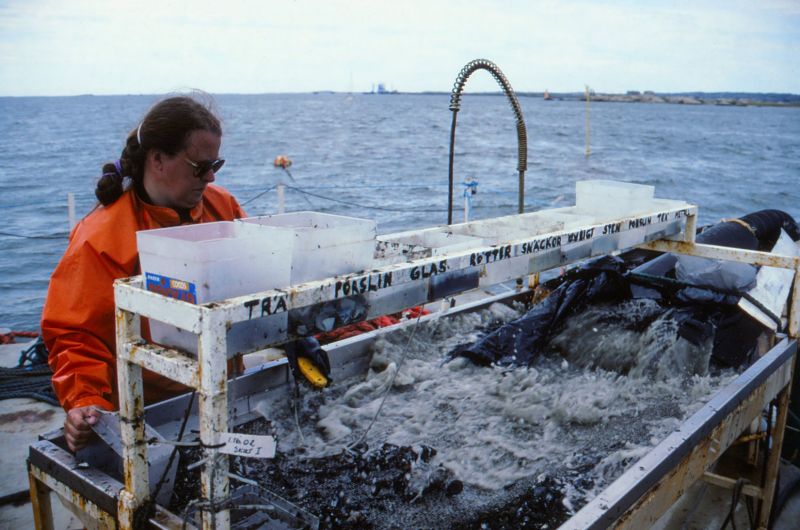
Mud and findings from the excavation area down at the bottom are pumped up to the diving platform, anchored over the wreck site, flushed over a fine meshed sieve. Anything interesting looking are kept and sorted by its main categories. The sieve is fine enough to catch pepper corns and even remnants of diverse insects from being flushed back out into the sea. Photo: Jan-Erik Nilsson, 1990
The original location of the wreck is found and decided with certainty. The fact that the ship in its construction had been inspired by the British could be noticed by the fact that the ship had been equipped with an extra 'loose' keel, to improve its sailing ability.
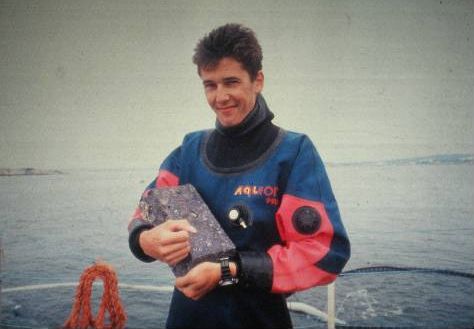
One of the 6,056 bars of 'Tutanego' the ship had originally carried from China.
It could finally be confirmed that this elusive metal was nothing but plain zinc.
One of the 6,056 bars of 'Tutanego' the ship had originally carried from China was found. The total weight could be decided to 21.6 kg which with a high degree of certainty could confirm that the Bill of Lading was correctly listing c. 130 tons.
Last season of actual excavations. The area close to the ship is investigated. The entire excavation area is covered with gravel to indicate for future investigations which area has been disturbed. Finds that could not be preserved are put back and filled over. Remaining excavation equipment was taken up and put in storage at New Elfsborg Fortress.
During the year three international exhibitions are undertaken to promote the finds, the ship and prepare the ground for a possible continuation. Eventually in 1992 the enormous network, publicity and goodwill Anders and Berit had created with their excavation project, could go into the founding of the second phase of the project, the reconstruction and rebuilding of a sailing replica of the Gotheborg.
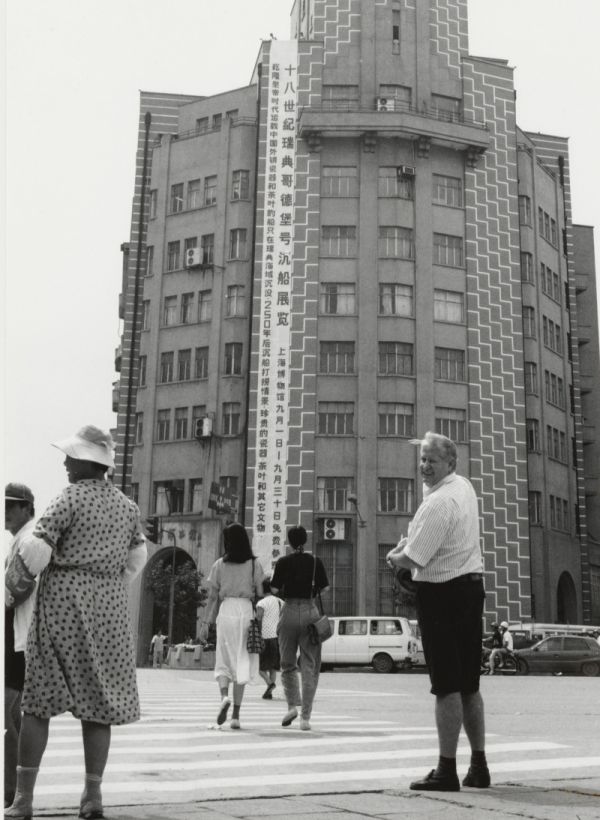
In 1992 the findings from the excavation of the East Indiaman Gothenburg is exhibited in Shanghai.
A 44-meter-long banner, displayed on the facade, announced the exhibition, which eventually attracted almost 30,000 visitors. At this moment, with the exhibition nearly ready to open, we went out to see the banner being hoisted.
Anders Wästfelt, to the right. Photo: Jan-Erik Nilsson, Shanghai, 1992.
The findings from the excavation of the East Indiaman Gothenburg is exhibited in Shanghai, organized by Anders Wästfelt and the Swedish Consul General Bengt Johansson, in Shanghai. The exhibition is much published in Chinese media and is visited by large Swedish delegations, mostly from those already established in Shanghai.
During the last few years of the excavation phase, Anders Wästfelt began to conclude his hundreds of lectures and presentations with the words - and now we are going to build up the East Indiaman Gotheborg again, and sail her to China and back, again, but this time, we are going to make it all the way back into the harbour, and not hit Hunnebådan and sink again, alternatively - and start the trade again and we will all become very rich, depending on the crowd.
You can't really say it was only Anders' idea to try to build her all up again. Everybody involved was thinking about what she had looked like, and felt like to sail. I think there you have it. But it was he and a small group of very serious professionals who accepted the challenge and pushed it through to completion. Admittedly my first thought had been 'I wonder if we could pick up all that old wood lying down there, in the water, to see if we could piece her back up together again'. But that was of course impossible. Too much was missing and what was left was in a miserable condition.
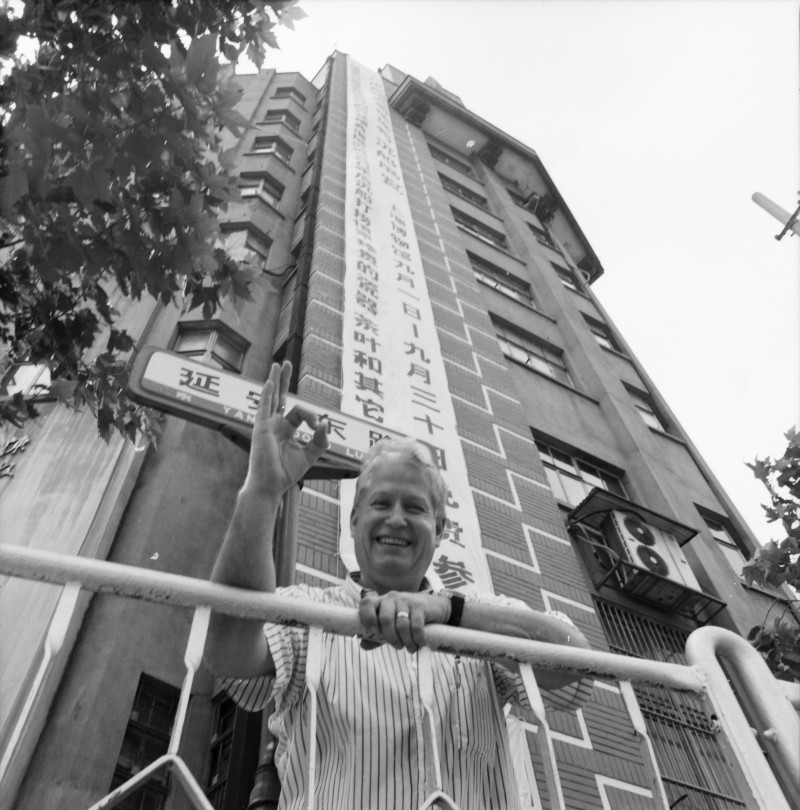
Final International marketing exhibition of excavation finds at the Shanghai Museum in September 1992
In September 1992, upon returning home immediately after the closure of the final International marketing exhibition of excavation finds at the Shanghai Museum the decision was made to establish an organization to facilitate the construction of a new 'Ostindiefararen Götheborg III,' Anders posed the question to Joakim Severinsson: would he be willing to take the lead in a ship reconstruction project, provided Anders could establish an organization to support it? Joakim hesitantly accepted the challenge and almost immediately produced a blueprint. As if he hadn't been thinking about this, too.
To enhance the project's appeal, it was suggested that we added; - and to undertake a new voyage to China and back, to the vision. Anders and Berit set out to create the organization, activating their massive network of friends and supporters, at which time I formally joined the initiating core management group, meeting weekly at the former excavation headquarters at Skateberg, Lindholmen.
In October 1992, we had worked out the idea enough to be presented. Maybe it is worth pointing out that there was no customer who wanted this to be done. It was just us. There was nobody to complain to about the grueling working hours or lousy pay. There was no pay. We couldn't even officially hire ourself since our new company SOIC AB would immediately have gone bankrupt due to lack of funds. If we had walked home one day, the whole thing would have stopped.
Since I had had the possible reconstruction project in mind for years when the excavation period was being wrapped up, I had encouraged Anders to ask Joakim to spend the last years of the excavation focusing explicitly on surveying any remaining parts of the ship's hull and construction details to aid in creating a replica. He was then tasked with developing a realistic construction blueprint for the ship we would set out to build. Anders Wästfelt explored our financial and market considerations, which is corporate B.S. for talking to God, the ***** and everybody in-between, about what we wanted to do and if how they could help. Berit Wästfelt sourced for talent (assessed the personnel and staffing needs), given the project's demands for exceptional personal skills and determination. My role would be documentation, and as an arts historian and marketing professional, I would assist Anders with conceptualizing the project to fit the sponsors we needed.
Somehow I do believe that my hunting down most every printed or handwritten document source about the Swedish East India Company 1731-1813 came in handy. It was kind of taken for granted. I was in the project and calm and happy about everything. Very few other would have been able to guarantee that the project would be a genuinely positive historical reference, so that it could attract sponsors throughout, and that no dark secrets would be falling out of any cabinets halfway through the project.
Except possible with some luck, the answer to why the original Gotheborg sank.
[Note to the above. In 2006, the missing document explaining the accident by Captain Moreen was found, explaining the accident as an - accident. His Declaration of Maritime Accident, 1745, is Available here.]